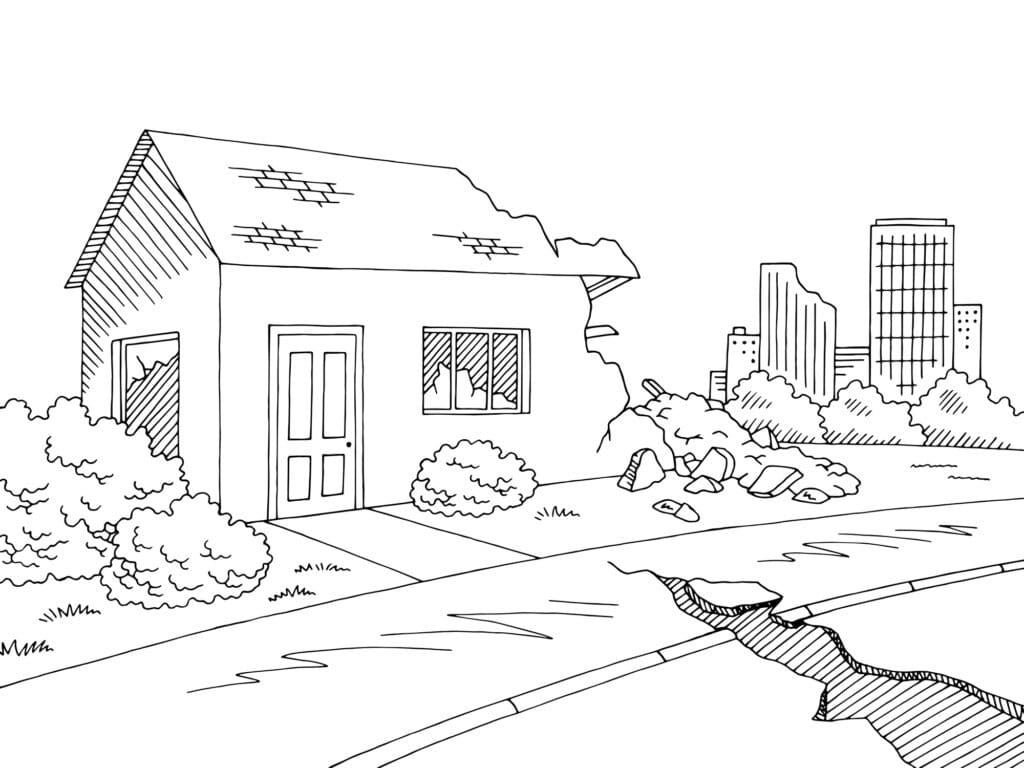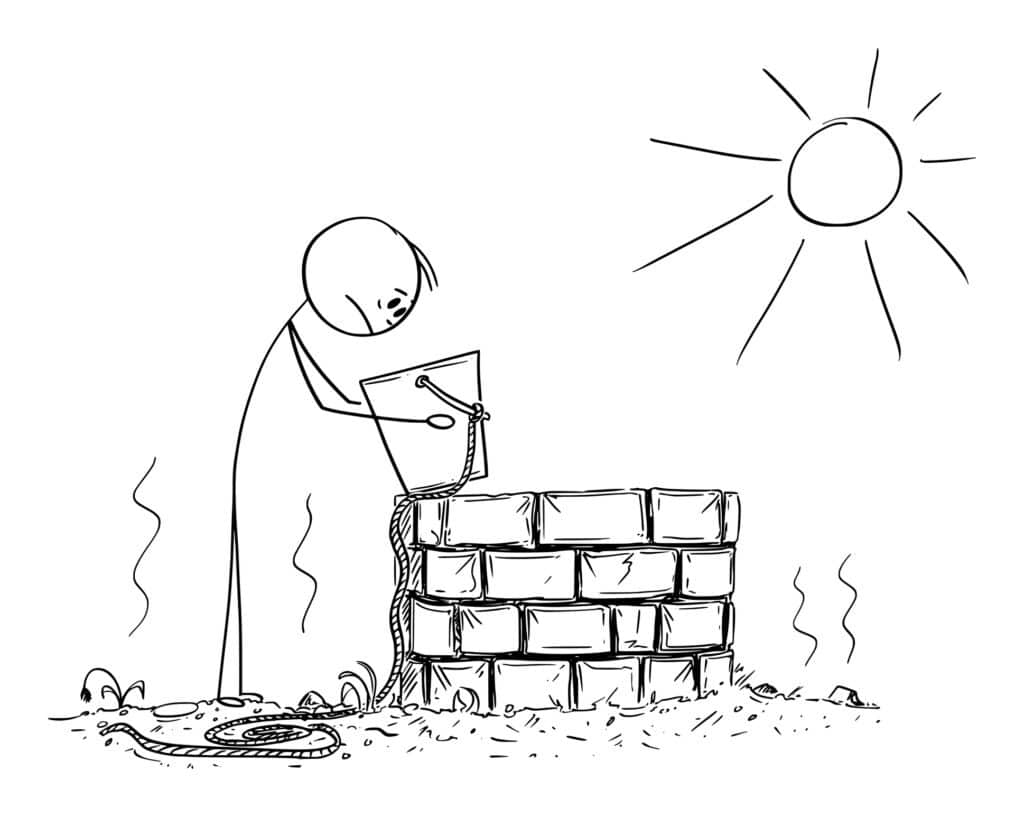POSTED
October 24, 2022
HOW MUCH Climate Change Will Hurt Your Finances – Part 4: Insurance
Insurance is a bellwether for risk, and that’s perfectly by design. I am focusing on property insurance for this article since the next article in the series will discuss health, and I will include health insurance as part of that analysis. Insurance is an entire industry that uses history, hard data, and complex predictive algorithms […]

Insurance is a bellwether for risk, and that’s perfectly by design.

I am focusing on property insurance for this article since the next article in the series will discuss health, and I will include health insurance as part of that analysis.
Insurance is an entire industry that uses history, hard data, and complex predictive algorithms to foretell future risks and price that risk into its customers’ premiums.
The insurance industry holds trillions of dollars of risk on its books. If insurance companies get it wrong, they stand to lose tens to hundreds of billions of dollars. The incentive structure to guess right on climate change is stronger than probably any other single industry.
So, what do the insurance companies tell us will happen, and how will that impact your insurance rates?
That all depends on where you live and your level of risk tolerance, and who your insurer is.

Can you guess how much insuring coastal property in Florida costs? How about in 20 years?
What does it cost to insure against fire in a western state like California? Is it even available?
The facts are right there to pick through.
Certain regions’ insurance costs are already high and growing due to climate risk. There are areas where property is uninsurable by commercial companies, and the Federal Government is stepping in to fill the need. Some areas are flatly uninsurable by any entity, and that number is growing.
The insurance industry is dedicated to predicting outcomes, but are they getting it right?
Let’s explore what they say about our future, how they price this risk, and what that means for you.
Part 4: Insurance – The Problem
Unlike the previous examples in this series on Housing, Food, and Transportation, the insurance industry is not a primary contributor to carbon. Instead, it is a seemingly careful researcher of climate change as a risk and one that views the risk from a financial perspective.
This differs from other climate researchers, such as universities and government-backed science by NASA or NOAA.
Because insurance companies are mostly for-profit entities, the politics of climate change are largely irrelevant, but getting the science right is paramount.
So, the industry knows precisely what’s going to happen, right?
No.
Sadly and terrifyingly, 92% of insurance companies are failing to prepare for climate change despite a powerful incentive to get this right. This is according to a recent insurance industry report by Capgemini. Markets for the win…oh wait.
According to Capgemini, “Climate change is hurting the insurance industry, and only 8% of insurers are preparing adequately for its impact…Insured losses from natural catastrophes have increased 250% in the last 30 years, with perils such as wildfires and storms, seen as particularly impacted by climate change, causing an even faster rise in insured losses, the report said in this Reuters article”.

The insurance industry has been quietly pricing in climate change for decades, despite this, they are falling way behind.
Is the insurance industry too big to fail? In 2008 we said yes, but I fear we may soon find out again, and on a global scale.
However, there is some cause to be optimistic.
According to this report by the Center For American Progress, writing “U.S. insurance supervisors are increasingly taking these risks seriously: New York’s Department of Financial Services recently issued guidance to companies on disclosing climate-related risks; the Federal Insurance Office last year issued a request for information on climate risks and the insurance sector; and in April, the National Association of Insurance Commissioners (NAIC) updated its survey for disclosing climate risks to require more comprehensive data reporting. But despite the positive nature of these actions, regulators could do more to concretely address the problem.”
Waiting on the insurance industry or regulators to catch up is not wise for individuals.

Insurance – The Personal Cost
$0 -$1000s more per month per household in risk-prone areas by 2040 if climate change is left unmitigated.
The cost of insurance premiums and the risks you are subject to are largely a function of location.
By 2040, the cost of property losses from natural disasters may increase by 60% in the U.S. due to climate change, according to Swiss Re.
Insuring a home in a resilient inland city without primary climate risk may not have a premium above baseline at all, meaning a $0 increase. Whereas ensuring a beachfront home in a hurricane-prone region may be so costly as to crater the value close to zero, meaning a 100% risk.
That could mean the total $-value of the property is on your personal books and is at risk for a complete loss.
The Motley Fool has created an exhaustive State-by-State analysis of homeowner’s insurance impacts that you should read: How Will Climate Change Impact Homeowners Insurance in All 50 States? I can’t even approach their level of analysis, so I’ll leave it to them!
In short, however, the risk in some places may become so high and the insurance costs so burdensome that only diehard residents will live there and be forced to self-insure.
Yet, in other places, the risk may hardly change at all. The old real estate adage holds; location, location, location.
Insurance – The Solution
Insurance companies will not insure uninsurable property on their own. This is not a controversial thing to say and merely reflects their best interests.
Insurance companies profit by paying out less than the premium brought in; it’s as simple as that.
Once they determine that an area is too costly to insure, there is no reason for them to continue doing business there, and are certain to pull out.
One solution is to expand government back insurance programs such as the National Flood Insurance Program managed by FEMA, which has historically only covered flood disasters but could theoretically be expanded to cover additional events exacerbated by climate change like forest fires or groundwater risks (an often overlooked risk).

Another idea is to provide government-funded backing to private insurers for specially selected regions or events so they can afford to insure uninsurable areas. Some states have implemented health insurance reinsurance programs to help lower premiums.
Insurance companies already spread the risk through reinsurance by themselves, taking out policies from other private insurers to cover extra risk. But it is possible that the risk in certain areas becomes too much for that to work. However, if we anticipate this and provide deeper reinsurance backing, we could float the risk for longer.
This very idea is argued for in this paper called “Adaptation to Climate Change Risks and Regulation Through Insurance: The Case of China” published in Climate Law in February of 2022.
The advantage to the two options above is that it largely allows folks to live in risky areas the same way they have, for generations in some cases, and to operate business as usual.
The downside is that it effectively incentivizes folks to keep living in areas that science tells us may soon be unlivable. Thus potentially dooming us to collectively pay for rebuilding homes and infrastructure repeatedly as they are destroyed with greater frequency.
Recent examples of this in Puerto Rico, where Hurricane Maria’s damage had not yet been fixed before new devastation was wrought again just a few short years later by Hurricane Fiona.
Providing insurance may soften burdens on communities that can’t afford to move to safer areas or refuse to do so for cultural or historical reasons. But it also potentially lengthens their intergenerational suffering as some areas continue to worsen and may never bounce back, at least not on human life timescales.
This brings us to in difficult but vital point; do we insure unlivable areas for nostalgic and politically expedient reasons, or do we do the hard thing and ask people to leave and foot the bill of moving them?
On paper, it would be cheaper to use predictive models to determine areas that will cost more to insure and rebuild repeatedly than to move people, then simply pay to move those people to more resilient areas of their choosing.
That would be the preventative medicine approach to the problem.
Or do we just wait until people are forced to move either from destruction or inflated costs that eventually force their hand?
Here’s my sober and cynical take: If history is any indication, we will draw this out for as long, painfully, and excruciatingly costly as possible. We are a hero-worshiping society, not one that values humbly solving problems before they arrive.
The Dutch knew sea level rise was a fact and began acting as early as 1992. Knowing this, they invested heavily in arguably the most advanced levy system on earth. Contrast this to the U.S., where we neglected our levees in Louisiana to devastating consequence during Hurricane Katrina in 2005.
Scientists told us in the late 1950s (and earlier in more obscure papers) that the climate was changing from our activity and that we could stop it with a few simple strategies (carbon tax, for example). Yet, we did almost nothing until it engulfed us.
To continue the preventative medicine metaphor; we are a society that wants a pill to fix our preventative disease problems after we’re sick, rather than simple diet and exercise changes shown to avoid most preventable diseases for free!
This extends to the way we approach policy. We change almost nothing until we have to.
My guess is that we will choose to do as little as possible in the now while the ignorant, poor, or less able suffer on the front lines.
However, individuals can choose another path for their family and can choose to demand action from their leadership.
That means making choices now to ensure your family is covered and to elect leaders who see the truth of climate risk for what it is.
As always, the choice is yours.
If you want to read more about how climate change will impact your finances, This article is Part 3 of a 6 Part series;
HOW MUCH Climate Change Will Hurt Your Finances – Part 1: Housing
HOW MUCH Climate Change Will Hurt Your Finances – Part 2: Food
HOW MUCH Climate Change Will Hurt Your Finances – Part 3: Transportation
HOW MUCH Climate Change Will Hurt Your Finances – Part 4: Insurance







Pingback: HOW MUCH Climate Change Will Hurt Your Finances – Part 3: Transportation - Shasta Power
Pingback: HOW MUCH Climate Change Will Hurt Your Finances - Part 2: Food - Shasta Power
Pingback: HOW MUCH Climate Change will hurt your finances - Part 1: Housing - Shasta Power